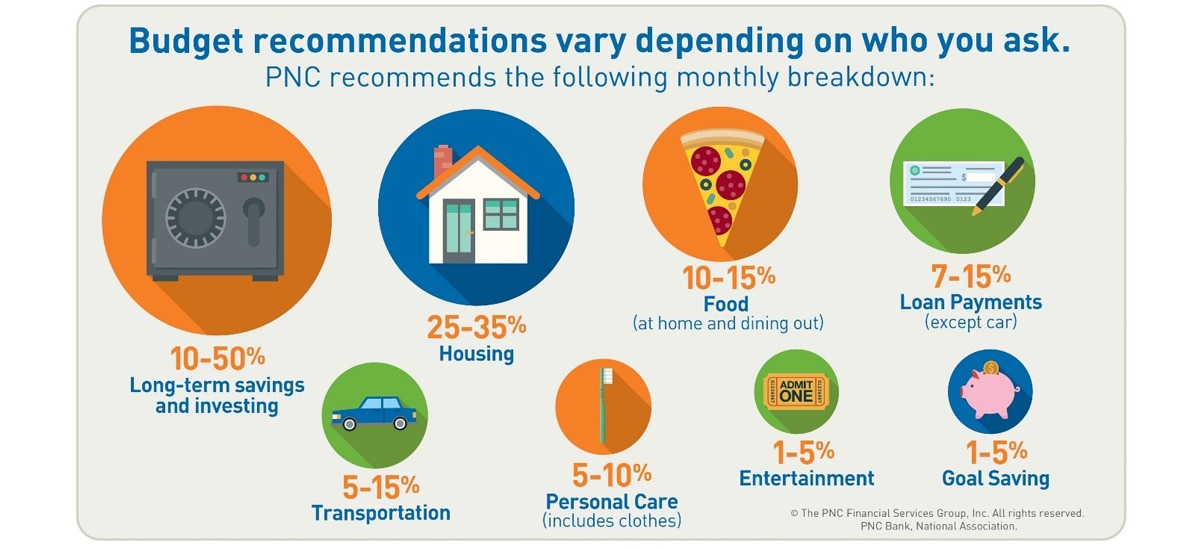
If you're financially unprepared, a medical issue, car problem, or job loss can devastate your finances. That’s why it’s prudent to have funds stashed away in an emergency fund to cover unexpected expenses both large and small.
An emergency fund is key to keeping your finances in good health.
Here’s how to build an emergency fund, including how much money you should save and when it's appropriate to dip into your "rainy day" savings.
What Is an Emergency Fund?
An emergency fund is money you set aside in a bank account in case of unplanned expenses. These expenses can be as minor as needing to replace a kitchen appliance or as major as needing to cover several months' worth of bills due to loss of job or illness or injury.
Why Should You Have an Emergency Fund?
Everyone should consider an emergency fund to help stay afloat financially in case of an unexpected expense. In the event of the proverbial "rainy day," an emergency fund helps you avoid relying on high-interest personal loans or credit cards. An emergency fund also helps protect any money you've stashed away for a long-term savings goal, such as retirement.
In addition, being well-prepared for unexpected expenses gives you peace of mind.
How Much Money Do You Need in Your Emergency Fund?
Ultimately, the amount of money in your emergency fund depends on your financial needs. This means looking at your regular monthly income, the number and needs of your dependents, and how much you owe each month for bills.
A good rule of thumb is to safely tuck away three to six months' worth of living expenses in an emergency fund separate from your checking account. Saving even more than that could be in order, especially if you're the sole earner in the household. You can use PNC's Safety Net Calculator to help determine your emergency savings goal.
However, saving several month's worth of expenses can seem daunting if you're just starting out — and seemingly impossible if you're currently living paycheck to paycheck.
Depending on your financial circumstances, consider starting small. Even an attainable goal, such as $25 per week, will prove helpful when you're just starting out.
As you start earning more money--or receive a windfall such as an inheritance--put more money into the emergency fund until its balance reaches your goals.
However, it’s important to begin right away. After all, having even some money saved toward an emergency is better than being caught by surprise with no savings at all.
Where Should You Keep Your Emergency Fund?
Typically, emergency funds are kept in bank accounts that pay interest and allow easy access to your money. This last consideration is crucial. In an emergency, the last thing you want is to lose money to penalty fees assessed by accounts with a term, such as a certificate of deposit.
Although checking accounts offer convenient access to your cash, keep your emergency fund away from any account from which you regularly withdraw money. Instead, an emergency fund is best kept separate. That way, you avoid temptation or accidentally dipping into it to pay everyday expenses.
One option for keeping an emergency fund is a high-yield savings account or money market account. These accounts can pay more interest than typical savings accounts. They're also generally protected by the Federal Deposit Insurance Corporation (FDIC) for up to $250,000 per depositor per bank for each ownership category.
Typically, you can withdraw funds from a high-yield or other savings account easily by visiting your local branch and taking the funds in person or by using an ATM card at an ATM. You can also use your bank's website or mobile app to transfer the funds to a checking account and then pay for the expense with a debit card or personal check.
Many banks impose monthly transaction limits on savings accounts. So they're not an ideal choice for everyday spending. However, because your emergency fund should be kept untouched until it's needed, a savings account could be a smart choice.
How Do You Build an Emergency Fund?
Here are some steps to help you get started building an effective emergency fund:
1. Open a savings account. The first step is to open a savings account at your bank. You may choose to keep your emergency fund in a high-yield savings account or a money market account to get the most bang for every saved buck. Keep in mind that, no matter which kind of account you choose, it's critical that you be able to access your money when it's needed most.
2. Determine how much you need to save. A useful guideline is to save at least three to six months' worth of basic living expenses (think rent or mortgage payments, utility bills, food costs, gas or transportation costs, etc.). You can use PNC's Safety Net Calculator to determine how much you should aim to have in your account.
3. Start with a monthly savings goal. It's unlikely you'll be able to transfer three to six months' worth of living expenses into a new savings account right away. You'll need to determine how much of your monthly income you can afford to set aside in your emergency fund. Don't worry if you can't afford to save a huge chunk of your income right now; every bit counts.
4. Set up direct deposit. If your employer offers direct deposit for your paycheck, it's possible that they might be able to split the total deposit amount up into two accounts. If so, arrange for a determined dollar amount to be deposited into your savings account every month. If your employer is unable to directly deposit your paycheck into two separate accounts, you may be able to set up automatic monthly transfers from your checking account to your savings account (especially if both accounts are at the same bank). By having the money directly deposited into your savings account, you'll avoid being tempted to keep some or all of your emergency fund money in your checking account.
5. Grow your savings over time. After you've started tucking money away into your emergency fund, see if you can increase your savings amount by a small percentage. For example, you may decide you don't need another streaming subscription after all and put that $10 per month into your emergency fund instead.
6. Add money from windfalls. If you receive any unexpected income (aka a windfall), such as an inheritance, a lottery win, or a sizable tax refund, put some or all of it into your emergency fund.
7. Replenish your emergency fund. If an emergency arises and you use some or even all of the money in your account, it's important that you keep saving to replenish the used amount as soon as possible. This way, if another emergency were to occur, you'd be able to cover that as well.
When Should You Use Your Emergency Fund?
Because your emergency fund should be used only for emergencies, you should never use it to pay for day-to-day expenses or "wants" of the moment.
Instead, think carefully about how you define what constitutes an emergency. That way you'll be able to recognize one when it happens.
What are some emergencies? A few of the big ones are loss of a job, unexpected medical or dental treatments, replacing a major household appliance, or financing a major car or home repair. Some others might include replacing a broken computer or having to fly home for a family emergency.
If you're unsure if something constitutes an emergency, ask these questions:
- Is this a necessary expense? In other words, will my life be significantly disrupted if I don’t spend the money?
- Does this expense need to be handled immediately?
- Was this expense unforeseen?
If you answer “yes” to more than one of these questions, you should feel comfortable using money from your emergency fund. Just remember to replenish it once the crisis has passed, and you have the means to start building it up again.
The Bottom Line
Emergencies can happen to any of us at any time. In fact, they have a way of taking place at the worst possible moment.
Dealing with a crisis can be stressful enough without having to worry about money.
An emergency fund that covers three to six months' worth of living expenses — and ideally more — can prevent you from relying on high-interest personal loans and credit cards. But, even more importantly, it can also provide you with long-term peace of mind.







